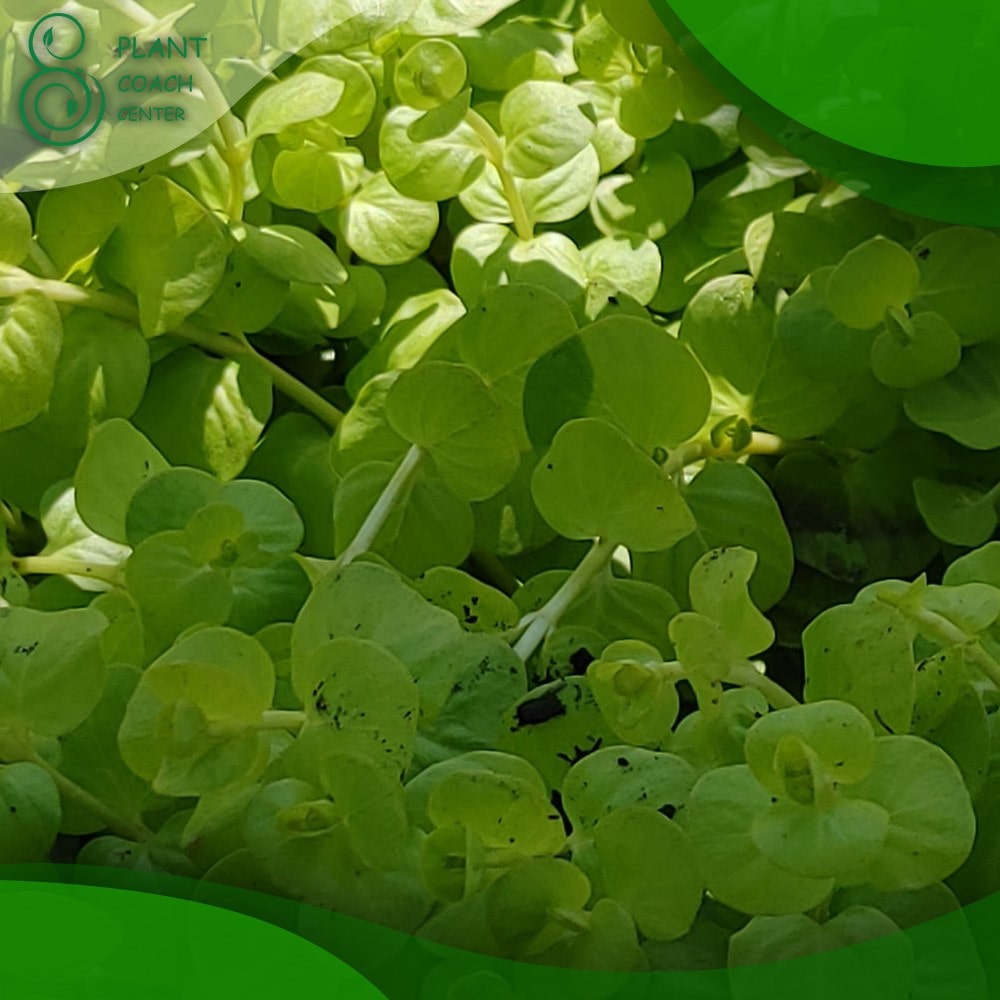When to Plant Creeping Jenny
Introduction
Plant Coaching: Empowering Gardeners for Success
At PlantCoachCenter.com, we believe that every gardener deserves the knowledge and guidance to achieve success in their plant endeavors. Plant coaching is a holistic approach that combines expert advice, practical techniques, and personalized support to help individuals cultivate thriving gardens.
In this comprehensive guide, we will delve into the fascinating world of plant coaching while focusing on the popular and versatile plant known as Creeping Jenny (Lysimachia nummularia).

The Basics of Creeping Jenny
Plant Description and Characteristics
Creeping Jenny, also known as Moneywort or Lysimachia nummularia, is a low-growing perennial plant that belongs to the Primulaceae family. It is native to Europe but has gained popularity worldwide for its attractive, trailing growth habit and vibrant yellow flowers. Let’s explore its notable characteristics:
– Trailing Habit: Creeping Jenny forms a dense mat of creeping stems that trail along the ground or cascade over containers and walls.
– Foliage: The rounded, coin-shaped leaves are glossy and vibrant green, adding a splash of color to various garden settings.
– Flowers: In the summer, Creeping Jenny produces small, cup-shaped bright yellow flowers that create a striking visual display.
– Versatile Growth: It thrives in a range of environments, from moist soils to waterlogged areas, making it a popular choice for water gardens and moist borders.
Popular Varieties and Cultivars
Creeping Jenny offers a variety of cultivars, each with its unique features and adaptations. Some popular cultivars include:
– ‘Aurea’: This cultivar showcases stunning golden-yellow foliage, adding a radiant touch to any landscape.
– ‘Golden Globes’: Known for its compact growth and golden foliage, this variety is perfect for containers and rock gardens.
– ‘Goldilocks’: With bright chartreuse leaves, ‘Goldilocks’ adds a vibrant pop of color and is an excellent choice for ground cover.
Growth Habits and Uses in Landscaping
Creeping Jenny is highly versatile and can be utilized in several ways to enhance your landscape. Consider the following:
– Ground Cover: Its spreading growth habit makes Creeping Jenny an excellent choice for ground cover, filling in bare areas and suppressing weed growth.
– Containers and Hanging Baskets: The trailing nature of Creeping Jenny makes it ideal for container gardens, hanging baskets, and window boxes, providing cascading foliage and vibrant color.
– Water Features: Due to its love for moist environments, Creeping Jenny thrives in water gardens, bog areas, and alongside streams or ponds, where it adds a lush, vibrant touch.
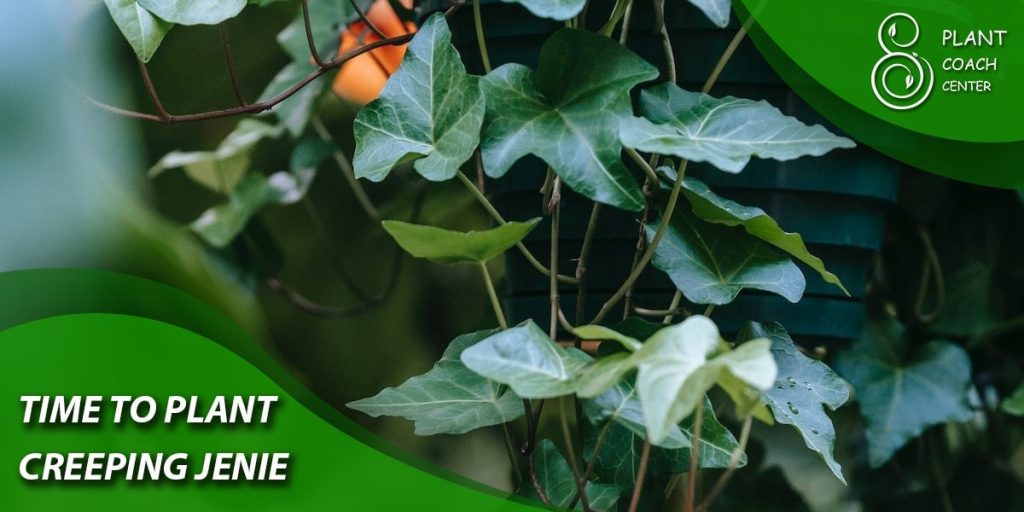
Factors Influencing Creeping Jenny Planting Time
Creeping Jenny planting time depends on various factors, including climate zones, microclimates, frost dates, and soil preparation. Understanding these influences is crucial for successful cultivation. Let’s explore the key factors that determine the best planting time for Creeping Jenny.
Climate Zones and Regional Considerations
– Hardiness Zones: Creeping Jenny is adaptable to a wide range of hardiness zones, typically thriving in zones 3 to 9. However, it’s essential to consider the specific requirements of your region.
– Regional Climate: Take into account the average temperatures, rainfall patterns, and seasonal variations in your area. Creeping Jenny prefers temperate climates but can withstand both cooler and warmer conditions with proper care.
Microclimates and Their Impact on Planting Time
– Microclimate Assessment: Assess the microclimates within your garden or landscape to identify variations in temperature, light exposure, and moisture levels. These microclimates can affect the growth and success of Creeping Jenny.
– Sun and Shade: Creeping Jenny generally prefers partial shade to full sun, but it can tolerate different light conditions. Monitor the sunlight exposure in specific areas to determine the most suitable planting spots.
Frost Dates and Temperature Extremes
– Last Frost Date: Planting Creeping Jenny after the last frost date is crucial to avoid damage to young plants. Consult local gardening resources or the Plant Coach Center to determine the average last frost date in your region.
– Cold Tolerance: Creeping Jenny exhibits good cold tolerance, but extreme temperature fluctuations may affect its growth. If frost or cold snaps are common in your area, consider planting after the risk of late frosts has passed.
Soil Requirements and Preparation
– Soil Type: Creeping Jenny thrives in moist, well-drained soil. It prefers slightly acidic to neutral pH levels (pH 5.8 to 7.2).
– Soil Preparation: Before planting, prepare the soil by removing weeds, loosening it with a garden fork, and incorporating organic matter like compost or well-rotted manure. This improves drainage and provides necessary nutrients for healthy growth.
Spring Planting of Creeping Jenny
Benefits and Challenges of Spring Planting
Spring is a favorable time for planting Creeping Jenny as the soil begins to warm up, providing optimal conditions for seed germination and root establishment. Consider the following benefits and challenges:
– Adequate Growing Season: Planting Creeping Jenny in spring allows it to establish a robust root system and acclimate to its surroundings before the heat of summer.
– Abundant Moisture: Spring often brings increased rainfall, providing natural watering for newly planted Creeping Jenny.
– Weed Competition: Spring planting may require diligent weed management, as weeds can also thrive during this season.
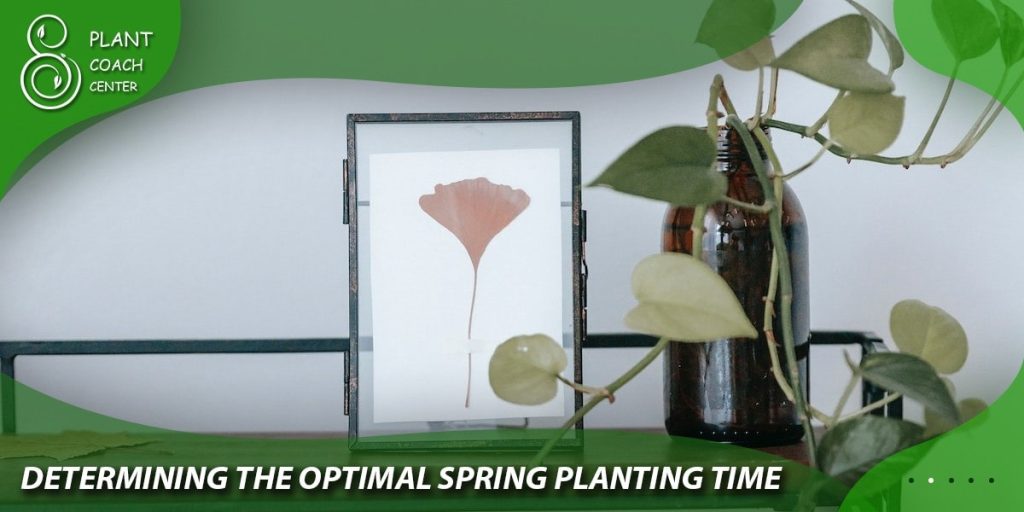
Determining the Optimal Spring Planting Time
– Soil Temperature: Wait until the soil temperature reaches around 50°F (10°C) for successful Creeping Jenny seed germination and growth.
– Local Climate: Consider the frost dates and temperature patterns specific to your region to determine the ideal timing for spring planting. Consult local gardening resources or the Plant Coach Center for guidance.
Seed Starting Indoors vs. Direct Sowing
– Indoor Seed Starting: Starting Creeping Jenny seeds indoors can provide a head start, especially in colder regions. Begin the process 6-8 weeks before the expected planting date, using seed trays or pots filled with well-draining seed-starting mix.
– Direct Sowing: Creeping Jenny seeds can also be sown directly into prepared garden beds. Ensure the soil is moist and workable before planting. Sow the seeds at the recommended depth, typically around 1/8 to 1/4 inch (3-6 mm), and provide consistent moisture.
Tips for Successful Creeping Jenny Seed Germination
– Moisture Management: Keep the soil evenly moist throughout the germination period, avoiding both excessive dryness and waterlogging.
– Light Requirements: Creeping Jenny seeds require light for germination. Press the seeds gently into the soil surface without covering them.
– Germination Time: Under optimal conditions, Creeping Jenny seeds usually germinate within 14-21 days. Be patient and maintain consistent care during this period.
Transplanting Seedlings and Care Guidelines
– Transplanting Timing: When the seedlings have developed a few sets of true leaves and the danger of frost has passed, they can be transplanted into the garden.
– Spacing: Space the Creeping Jenny plants according to the specific variety’s recommended spacing guidelines, usually around 12-18 inches (30-45 cm) apart.
– Watering and Maintenance: Provide regular watering to establish the seedlings. Mulching the soil around the plants helps conserve moisture and suppress weed growth.
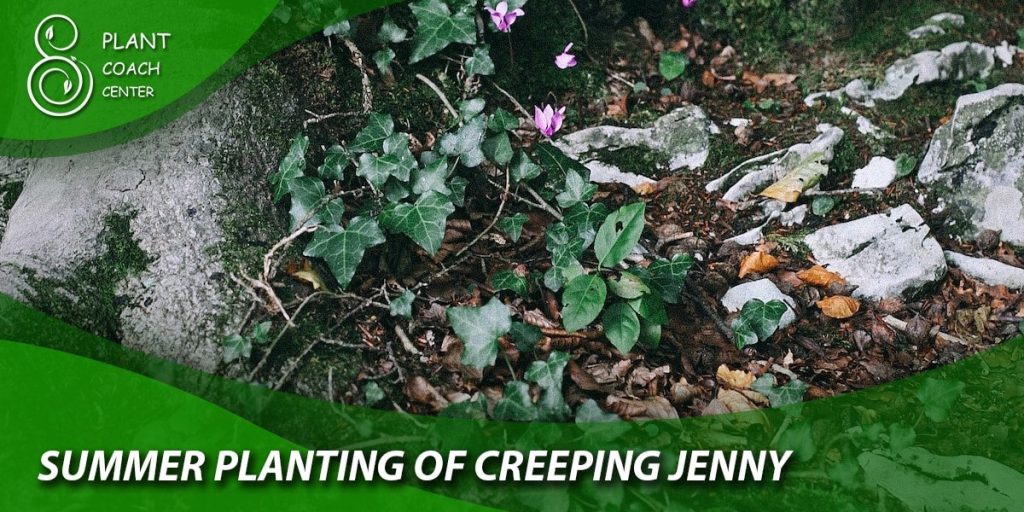
Summer Planting of Creeping Jenny
Benefits and Challenges of Summer Planting
Summer planting of Creeping Jenny offers its own set of benefits and challenges. Understanding these factors is crucial for ensuring successful establishment and growth during this season. Consider the following:
– Warmth and Sunlight: Summer provides ample warmth and sunlight, which promotes rapid growth and vibrant foliage color in Creeping Jenny.
– Increased Watering Demands: With higher temperatures and potential drought conditions, adequate watering is essential to prevent stress and maintain plant health.
– Competition with Weeds: Weeds also thrive in summer, so regular weed management is necessary to prevent them from overshadowing or competing with Creeping Jenny.
Optimal Timing for Summer Planting
– Early Summer Planting: Aim to plant Creeping Jenny in early summer when temperatures are not yet at their peak. This allows the plant to establish roots and adapt before facing intense heat.
– Soil Moisture Considerations: It’s important to ensure that the soil is adequately moist before planting. Water the garden bed thoroughly a day or two before planting to provide a good moisture base for the Creeping Jenny.
Transplanting and Care Guidelines
– Transplanting Preparation: Before planting, prepare the planting holes by digging them slightly larger than the root ball of the Creeping Jenny plant.
– Soil Amendments: Incorporate organic matter, such as compost or well-rotted manure, into the planting hole to improve soil moisture retention and nutrient availability.
– Watering: After transplanting, provide generous watering to help the roots establish and reduce transplant shock. Water deeply and regularly, ensuring the soil remains consistently moist but not waterlogged.
– Mulching: Apply a layer of organic mulch around the plants to conserve moisture, suppress weed growth, and insulate the soil, helping to regulate soil temperature.
Summer Care Considerations
– Adequate Watering: Water Creeping Jenny deeply and regularly during hot and dry periods. Monitor soil moisture levels and adjust watering frequency as needed to prevent drought stress.
– Shade Protection: If intense afternoon sun and heat are prevalent in your region, consider providing some shade or dappled sunlight to protect the Creeping Jenny from scorching.
– Weed Control: Regularly inspect the planting area for weeds and promptly remove them to prevent competition for resources and ensure the health of the Creeping Jenny.
– Fertilization: Apply a balanced slow-release granular fertilizer or a liquid fertilizer formulated for flowering plants according to the package instructions. This provides essential nutrients to support healthy growth and flower production.
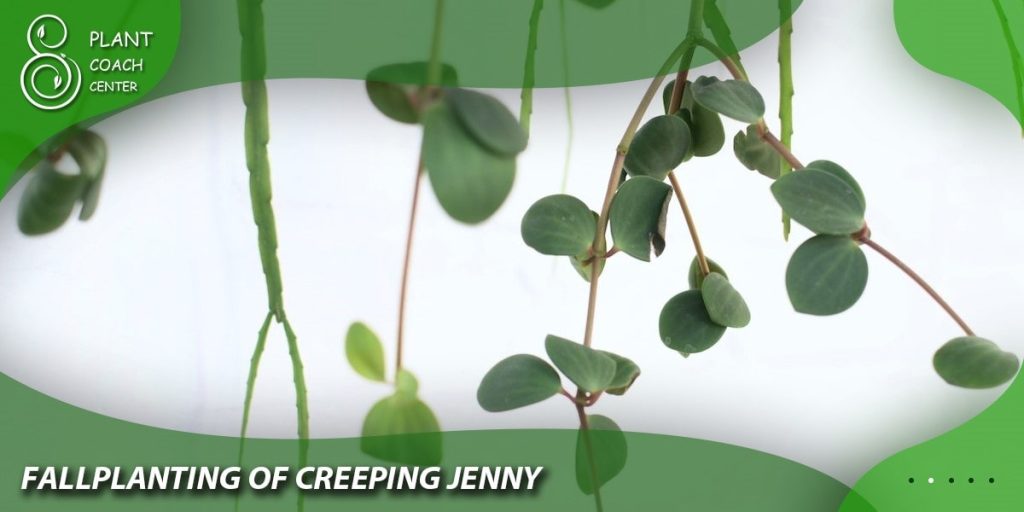
Fall Planting of Creeping Jenny
Benefits and Challenges of Fall Planting
Fall planting of Creeping Jenny offers several advantages due to the cooler temperatures and favorable conditions for root development. However, it also comes with its own challenges. Consider the following:
– Cooler Temperatures: Fall planting allows Creeping Jenny to establish roots in cooler soil, reducing the risk of heat stress and promoting healthy growth.
– Extended Root Development: By planting in the fall, the plant has an extended period to develop a strong root system before the onset of winter.
– Moisture Availability: Fall often brings more consistent rainfall, reducing the need for frequent watering. However, it’s still important to monitor soil moisture levels.
Optimal Timing for Fall Planting
– Before Frost Sets In: Aim to plant Creeping Jenny in early to mid-fall, allowing sufficient time for the roots to establish before the ground freezes.
– Regional Considerations: Consider the average first frost date in your region as a guideline for determining the optimal timing of fall planting. Consult local resources or the Plant Coach Center for specific information.
Transplanting and Care Guidelines
– Preparing the Site: Prepare the planting area by removing weeds and improving soil drainage, if necessary. Loosen the soil with a garden fork and incorporate organic matter to enhance moisture retention.
– Transplanting Technique: Dig planting holes slightly larger than the root ball of the Creeping Jenny plant. Place the plant in the hole, ensuring it is at the same depth as it was in the container or nursery pot.
– Watering and Mulching: Water the transplanted Creeping Jenny thoroughly and apply a layer of mulch to conserve moisture and provide insulation throughout the fall and winter.
– Monitoring Moisture: While fall often brings more rainfall, monitor the soil moisture regularly and provide supplemental watering during dry spells to ensure adequate moisture for root establishment.
Fall Care Considerations
– Light and Temperature: Creeping Jenny benefits from full sun to partial shade during the fall season. Ensure it receives the appropriate light exposure based on its specific requirements.
– Leaf Cleanup: Keep the planting area free from fallen leaves and debris. Excessive leaf accumulation can restrict airflow and promote disease development.
– Frost Protection: If frost is expected in your region, consider using frost blankets or row covers to protect the Creeping Jenny plants during cold spells.
– Minimal Fertilization: Avoid applying high-nitrogen fertilizers in the fall, as this can promote tender growth that is susceptible to frost damage.

Conclusion: Empowering Gardeners with Creeping Jenny and Plant Coaching
In conclusion, Creeping Jenny (Lysimachia nummularia) is a versatile and visually appealing plant that can enhance various garden settings. By understanding the factors that influence its planting time and adopting appropriate techniques, gardeners can successfully cultivate Creeping Jenny and enjoy its vibrant foliage and trailing habit.
Plant coaching, as exemplified by PlantCoachCenter.com, provides valuable guidance and support to gardeners, empowering them to achieve success in their plant endeavors. Whether it’s determining the optimal planting time, learning about plant characteristics, or addressing care considerations, plant coaching offers the knowledge and expertise needed to thrive in the world of gardening.
So, harness the power of plant coaching, explore the wonders of Creeping Jenny, and embark on a rewarding journey of creating vibrant and thriving gardens.
When should I plant creeping jenny?
Spring or early summer.
Is there a specific time of day to plant creeping jenny?
Any time of day is suitable.
Can I plant creeping jenny in the fall?
It's best to avoid planting in the fall.
Is it okay to plant creeping jenny in winter?
No, winter is not a suitable time for planting creeping jenny.


